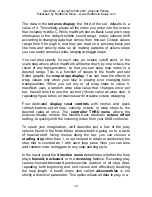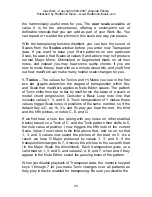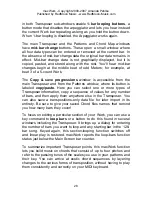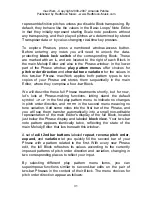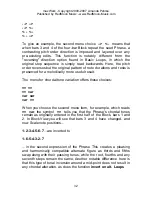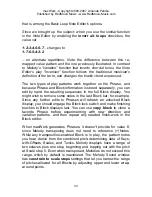
maxWerk - Copyright 2000-2007 Amanda Pehlke
Published by RedMoon Music - www.RedMoon-Music.com
22
sound-shaping, sending values just ahead of note information to
create distinct rhythmic changes or stepped effects.
The Control and Bend windows differ from the main Note Editor in
that once you enter values, to have them transmit you must enable
MIDI output via the activation menu in the right margin of the
display. This lets you block and unblock controller and bend effects
while you consider patch selections. You can invert transmitted
values here too, and maxWerk remembers the activation setting.
It's best not to move Controller and Bend windows because they
open positioned over the Note Editor on your computer screen, so
you can conveniently compare their patterns against your pattern of
notes. While you can draw in values by hand, both Control Editors
and the Bend Editor offer generated patterns of sawtooth, sine,
pulse, triangle, or either of two parabolic curves. You can auto-
generate one to four cycles of any of these waveforms, and you
can compress values on entry. As an alternative approach, you can
quickly generate repeating sequences by entering one instance of
the desired set beginning at step 1. Press the button labeled repeat
a series, and enter the number of steps to be repeated into the
dialog box presented. You'll find the same function available for
each of the displays in the Note and Drum Editor windows.
You can shift entered values up or down all at once by using the
vertical arrow buttons to the right of the displays. When you adjust
patterns vertically, all values 0-127 wrap around in the display.
Instead of a function to horizontally rotate displayed values, there is
a control to set the starting step of the displayed sequence. Finally,
using the direction options menu you can control response to
loop play direction changes called for by the Note Editor.
The randomize/latch button always engages step-sync mode.
When you use the randomizing function, maxWerk generates a
single set of step-synced random values that you can keep or edit.
When you check the random-latch checkbox, maxWerk generates
a new set of step values each time the loop repeats. This dynamic
sample-and-hold style function is particularly interesting when you











